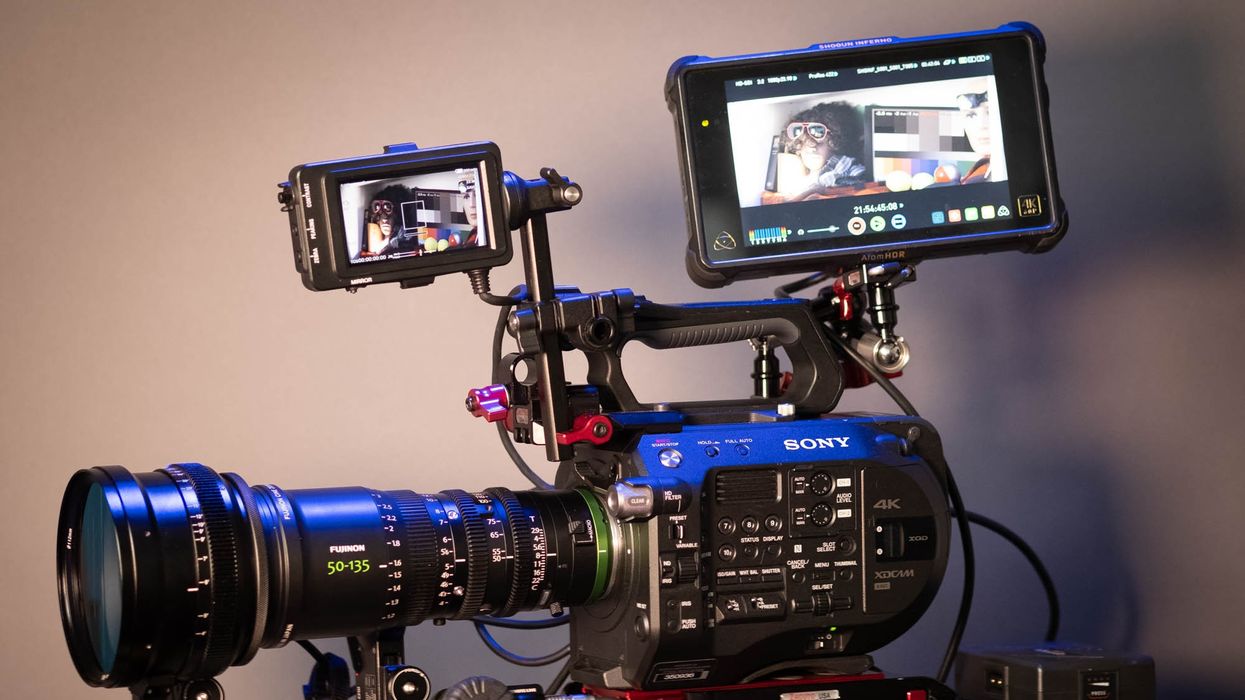SLR Magic on a MK Zoom Makes Optical Anamorphic Affordable Again
Is Optical Anamorphic an Affordable Option Again? Here's our hands-on review of the SLR Magic on a MK Zoom.

Filmmakers have long known that using full sensor resolution gives them the best image quality possible. But of course the desired output aspect ratio might not perfectly match the aspect ratio of the sensor. If you don't mind losing a bit of resolution, you crop.
But if you want all the resolution possible, your best bet is to use an Anamorphic adapter to squeeze the desired aspect ratio onto the right sensor. This was originally a complicated system, involving a normal lens and an Anamorphic adapter that had to be focused in sync with each other, but lens designers soon figured out a way to integrate the platforms together into a single lens, with a single focus ring. The drawback, of course, was cost.
SLR Magic on a MK Zoom
SLR Magic are trying to make Anamorphic affordable again with its new Anamorphic adapter for the MK Zooms. We notoriously love the MK zooms for its lightweight, low cost, true parfocal performance, and great image quality. Paired with an XH1 you have a really dynamic combo, or paired with an FS7 you have an indie cinema machine. But of course those cameras put out 16x9 images, and for "cinema" many still prefer the Anamorphic 2.39x1 aspect ratio, which is the hole that SLR Magic are hoping to fill here.
Like old school adapters, the system requires you to focus both the adapter at the lens together in sync. However, in the last 10 years we've seen a major shift happening with the price and functionality of follow focus units. That makes it affordable, for under $1000, to get a focus controller and 2 modules that can stay in sync with each other, with our demo unit coming with a system from X.
Syncing and Image Quality
Syncing the units was relatively easy, and they mostly stayed in sync in our tests, but honestly we would want to do a dozen low stakes shoots on any system like this before seriously considering it on a real job. The image quality is impressive considering the cost: you could purchase the whole setup for $12k, which for two parfocal cinema zooms is amazing. But having to sync the lenses together just made us nervous. In our tests, we were surprised at how well it worked, but honestly apprehensive that it would continue to do so. That's not a criticism of any manufacturing quality, just the reality of production. We've been on countless shoots where the wireless went down and we simply pulled it off and kept shooting. This setup requires a complicated synched dual motor wireless to work, which just makes us nervous.
The image quality was the true goal, and there we felt it did delivery, sharp images with a distinct "scope" feeling and nice breathing on focus, but right now we would consider this adapter more for fashion/social videos, where the situation is more controlled. If shooting on a stage, with a little room to futz if there is a problem, it seems robust enough to be worth the risk for the creamy images. But for a run-and-gun indie job on locations, getting 20 setups a day, we wouldn't be willing to risk the possibility that we might have the units loose sync with each other right before a vital shot. It also, surprisingly, didn't flare that dramatically, but that can always be augmented in post. Considering the modern tools for flares, actually, we like anamorphic more for the subtle creamy quality of using more of the sensor, and consider the flares more a bonus than the driving factor.
Filmmaking Uses for the SLR Magic
It's a fun time to be an indie filmmaker because not only are there so many cool affordable tools, there are some many different types of shoots we can employ them on. We never thought we would end up with a system that required focusing both the lens and the anamorphic outside the museum of the moving image, but here we are, in 2018, seriously considering it for a few upcoming projects.
Available now.
Tech Specs:
- 114mm front diameter
- 4' close focus
- multi coated
- MK lenses fully parfocal
- 780 grams













![Ethos, Pathos, Logos: 20 Effective Ways to Advertise [Infographic]](https://nofilmschool.com/media-library/ethos-pathos-logos-20-effective-ways-to-advertise-infographic.jpg?id=34064614&width=600&height=600&quality=90&coordinates=560%2C0%2C0%2C0)

